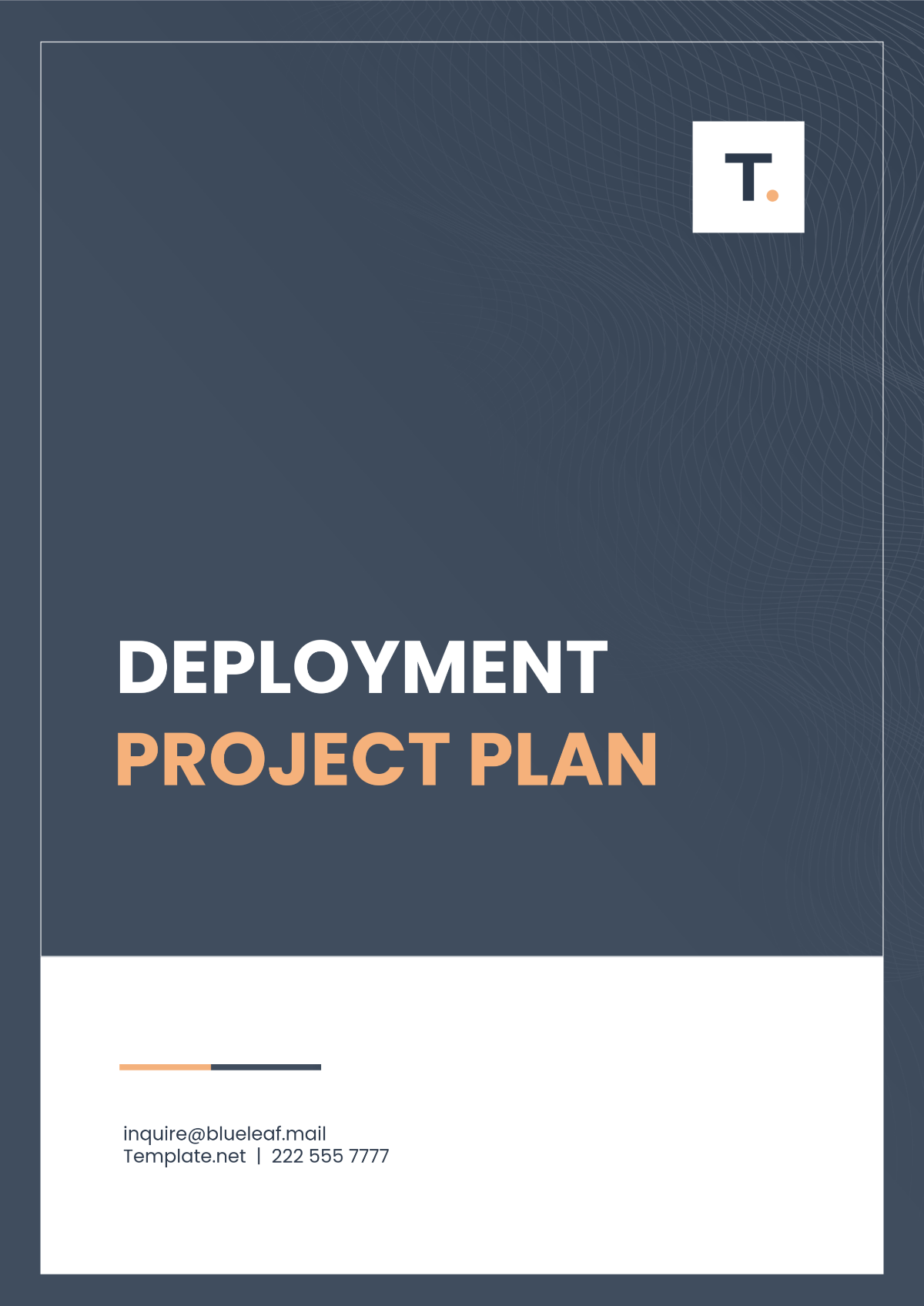Deployment Project Plan
Prepared By: [Your Name]
Company: [Your Company Name]
I. Executive Summary
The deployment project aims to enhance our operational capabilities by implementing a robust and scalable system across all departments. This initiative is pivotal for achieving strategic growth objectives and maintaining a competitive edge in the market. The project's scope includes system integration, data migration, and a comprehensive rollout plan designed to ensure minimal disruption and maximum efficiency.
II. Project Scope and Objectives
The primary objectives of the deployment project are:
To seamlessly integrate the new system with existing infrastructure.
Ensure data integrity and security during migration.
Enable scalability to adapt to future growth and technological advancements.
Maintain continuity of operations with minimal downtime during deployment.
The project boundaries confine deployment to internal systems, excluding customer-facing applications.
III. Roles and Responsibilities
Project Manager: Oversee project execution, and manage timelines, resources, and stakeholder communication.
IV. Timeline and Milestones
Milestone | Date |
|---|
Project Initiation | January 10, 2060 |
System Design Completion | March 15, 2060 |
Data Migration Start | May 20, 2060 |
Deployment Rollout | July 1, 2060 |
Final System Review | September 30, 2060 |
V. Resources and Budget
The project requires investment in state-of-the-art software platforms, updated security tools, and staff training programs. The estimated budget is as follows:
Resource | Cost ($) |
|---|
Software Licenses | 150,000 |
Security Enhancements | 50,000 |
Training Sessions | 30,000 |
Contingency Fund | 20,000 |
VI. Risk Assessment and Mitigation
The following potential risks have been identified along with mitigation strategies:
Data Integrity Risk - The potential issues are mitigated through the implementation of double-validation protocols, alongside the incorporation of backup systems, which together work to enhance reliability and security.
VII. Deployment Steps
Finalize project plans and secure necessary approvals.
Complete infrastructure readiness assessment.
Conduct initial data backups and initiate migration.
Execute system integration and user acceptance testing.
Rollout production version system-wide.
VIII. Communication Plan
Consistent communication is crucial for project success. The following methods will be employed to ensure stakeholders are informed throughout the project lifecycle:
Weekly project status meetings with all team members.
Monthly progress reports distributed to stakeholders.
Email notifications for any urgent updates or changes.
IX. Testing and Validation
Comprehensive testing ensures the deployment meets all functional and performance requirements. Key validation steps include:
User Acceptance Testing (UAT) to validate system usability.
Performance Testing to assess the system's responsiveness under load.
Security Audits to confirm compliance with data protection standards.
X. Post-Deployment Support
After deployment, a dedicated support team will be available to address any issues. The key support strategies include:
24/7 helpdesk support for the first-month post-deployment.
Regular system health checks and performance evaluations.
User feedback collection and incorporation for continuous improvement.
Project Plan Templates @ Template.net






























